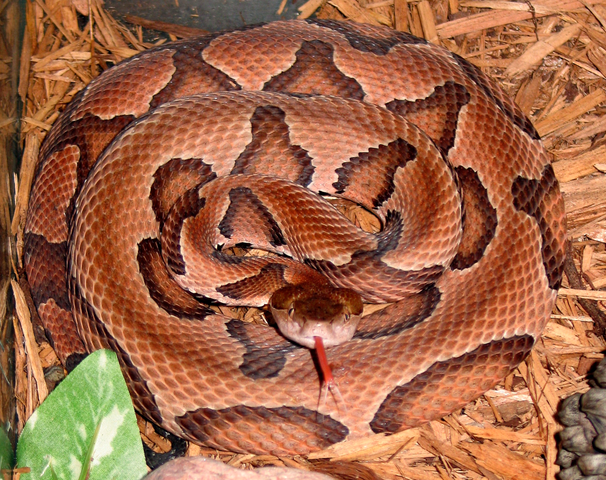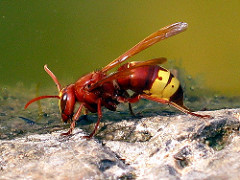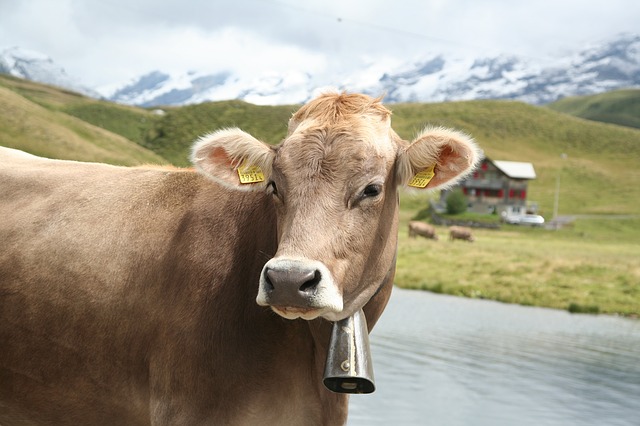An article reviewing the CDC’s database on causes of death in the U.S. due to animals was recently published in Wilderness and Environmental Medicine. It is based on death certificates and the reasons attested to by the physicians who certified the causes of the patient's deaths. In all 1610 humans lost their lives during the seven-year period from 2008-2015. Who were the animal killers amongst us?
 Coming in at #4 were venomous spiders, lizards, and other arthropods cumulatively accounting for 15% of the fatalities. This category includes such classic creatures as several varieties of the rattlesnake, the cottonmouth snake and the snake most associated with bites, the copperhead. It seems that unlike their more sensible snake brothers, copperheads tend to freeze in place when encountering a human and as a result bite them rather than flee. While several spiders bite humans and can inject venom, only the Black Widow Spider has caused deaths.
Coming in at #4 were venomous spiders, lizards, and other arthropods cumulatively accounting for 15% of the fatalities. This category includes such classic creatures as several varieties of the rattlesnake, the cottonmouth snake and the snake most associated with bites, the copperhead. It seems that unlike their more sensible snake brothers, copperheads tend to freeze in place when encountering a human and as a result bite them rather than flee. While several spiders bite humans and can inject venom, only the Black Widow Spider has caused deaths.
 The animal coming in at #3 is, I am sad to report, our dogs accounting for 17% of fatalities. Yes, Rover, over there on the right, I am looking at you. Dogs are responsible for more than 4.5 million bites annually resulting in over 300,000 visits to area Emergency Departments – a non-trivial healthcare expenditure. Like the flu, dogs attack our most vulnerable. Children under age 4 are the group primarily killed, followed by adults over the age of 65. Those groups and the percentages of deaths caused by man’s best friend have been stable throughout the period.
The animal coming in at #3 is, I am sad to report, our dogs accounting for 17% of fatalities. Yes, Rover, over there on the right, I am looking at you. Dogs are responsible for more than 4.5 million bites annually resulting in over 300,000 visits to area Emergency Departments – a non-trivial healthcare expenditure. Like the flu, dogs attack our most vulnerable. Children under age 4 are the group primarily killed, followed by adults over the age of 65. Those groups and the percentages of deaths caused by man’s best friend have been stable throughout the period.
 #2 among the most deadly animals are hornets, wasps, and bees whose stings result in massive allergic responses, termed anaphylaxis, in susceptible individuals. They are responsible for 30% of animal-related human deaths, about 60 cases annually. The incidence of these fatalities has risen slightly, but the study’s authors point out that this is reflected in a lower incidence among venomous creatures (our #4) because of better anti-venom therapies. The treatment of the allergic reaction, is the in-the-news medication, the Epi-Pen. Susceptible individuals should have an Epi-Pen (brand or generic) with them at all times. These bites also account for 220,000 annual Emergency Department Visits.
#2 among the most deadly animals are hornets, wasps, and bees whose stings result in massive allergic responses, termed anaphylaxis, in susceptible individuals. They are responsible for 30% of animal-related human deaths, about 60 cases annually. The incidence of these fatalities has risen slightly, but the study’s authors point out that this is reflected in a lower incidence among venomous creatures (our #4) because of better anti-venom therapies. The treatment of the allergic reaction, is the in-the-news medication, the Epi-Pen. Susceptible individuals should have an Epi-Pen (brand or generic) with them at all times. These bites also account for 220,000 annual Emergency Department Visits.
 And #1, the most dangerous animals to humans in the United States – other mammals, which include farm animals, raccoons, and cats, representing 36% of all human fatalities. Before you, cat owners begin eyeing Tabby suspiciously, let me point out that far and away the biggest killer in this group are cows and horses. Agriculture, along with forestry, fishing and the hunting sector has the highest occupational mortality in the U.S. with approximately 24.4 deaths/100,000 workers. (And you thought coal mining was tough) Farming has an injury rate of about 10% of their workforce and most experts feel that number is under-reported. Dairy cows kill, especially during milking when humans may be just a little too close or intrusive.
And #1, the most dangerous animals to humans in the United States – other mammals, which include farm animals, raccoons, and cats, representing 36% of all human fatalities. Before you, cat owners begin eyeing Tabby suspiciously, let me point out that far and away the biggest killer in this group are cows and horses. Agriculture, along with forestry, fishing and the hunting sector has the highest occupational mortality in the U.S. with approximately 24.4 deaths/100,000 workers. (And you thought coal mining was tough) Farming has an injury rate of about 10% of their workforce and most experts feel that number is under-reported. Dairy cows kill, especially during milking when humans may be just a little too close or intrusive.
Source An Update on Fatalities Due to Venomous and Nonvenomous Animals in the United States (2008-2015) DOI: 10.1016/j.wem.2017.10.004
Images: Copperhead courtesy of the CDC, Rover courtesy of Pixaby, Hornet courtesy of Stavros Markopoulos on Flickr, Cow courtesy of Pixaby



